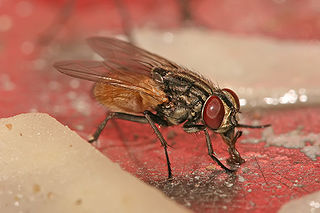
Within the taxonomy of biology, the subfamily Muscinae includes two of the more familiar genera within the Muscidae family; Musca and Stomoxys.

Haematobia irritans, the horn fly, is a small fly. It was first described by Carl Linnaeus in his 1758 10th edition of Systema Naturae. It is of the genus Haematobia which is the European genus of bloodsucking flies. Haematobia irritans is a native of Europe but has been introduced to North America and is considered a potentially dangerous livestock pest.

Musca autumnalis, the face fly or autumn housefly, is a pest of cattle and horses.

Muscini is a Tribe of flies from the family Muscidae.

Thricops semicinereus is a species of fly which is widely distribution across the Palaearctic.

The Mydaeinae are a subfamily of true flies, belonging to the family Muscidae.
Dasyphora is a genus from the fly family Muscidae.
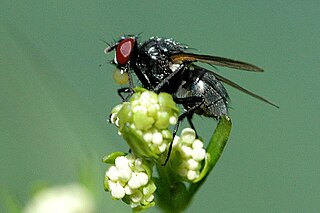
Azeliini is a Tribe of flies from the family Muscidae.
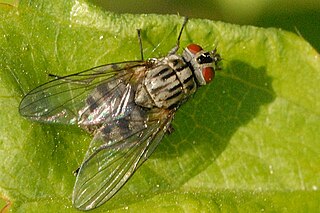
Reinwardtiini is a Tribe of flies from the family Muscidae.

Stomoxyini is a tribe of flies from the family Muscidae.
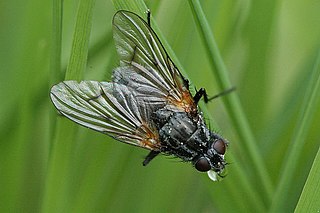
The subfamily Phaoniinae is within the Diptera family Muscidae. All species are in the tribe Phaoniini.

Phaonia pallida, the muscid fly or orange muscid fly, is a species of fly in the family Muscidae.

Hydrotaea dentipes is a fly from the family Muscidae. Its larvae have been found in the dung of rabbits, pigs, cows, horses, chickens and humans. It is found in the Palearctic.
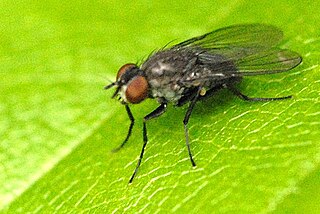
Coenosia sexmaculata is a fly from the family Muscidae.

Hebecnema umbratica is a fly from the family Muscidae. It is the type species of the genus Hebecnema.

Helina evecta is a fly from the family Muscidae.
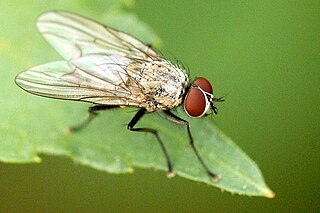
Helina maculipennis is a long fly from the family Muscidae.

Helina protuberans is a fly from the family Muscidae. It is found in the Palearctic.

Helina setiventris is a fly from the family Muscidae. It is found in the Palearctic.

Achanthiptera rohrelliformis is a fly from the family Muscidae. It is found in the Palearctic . The larvae are found in the nests of wasps and hornets where they feed upon organic remains and the dead carcasses of the wasps and their larvae.


















